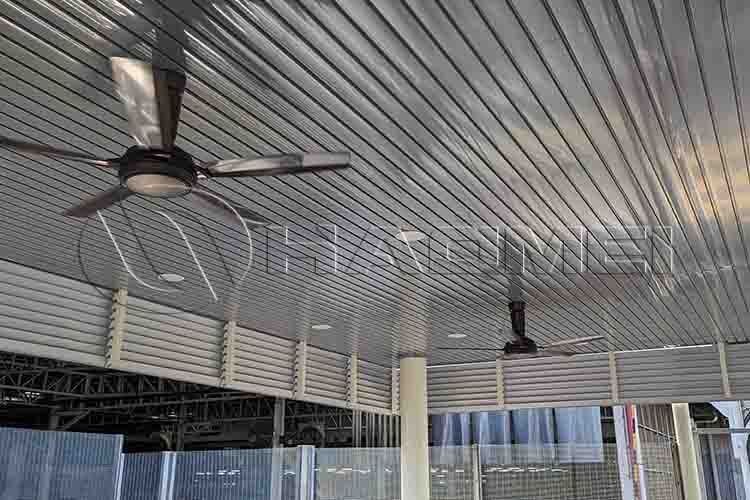Aluminum Strip for Fin Stock and Ceiling
Aluminum strip, a material with unique properties, is widely used in the construction and industrial sectors, with suspended ceilings and heat sinks being two typical applications.

Aluminum Strip for Ceiling
In the field of architectural decoration, aluminium strip ceiling is a popular keel material for ceiling decoration due to its light weight, high rigidity, excellent fire resistance, corrosion resistance, rust resistance, good earthquake resistance, and easy installation.
Aluminum strips play a key role in the production of aluminum alloy ceilings. They are often combined with aluminum alloy profiles through processes such as cold bending or stamping to form the decorative framework.
When it comes to material selection, the specifications, model, material, coating quality, and thickness of aluminum strips used in suspended ceilings must strictly meet design requirements. For example, the width of the aluminum strips must be consistent, otherwise it will affect the overall aesthetics of the ceiling.
Furthermore, because aluminum strips from different batches may exhibit slight color variations, aluminum strips for the same area must be processed from the same batch. Strips for different areas can be processed in separate batches to ensure consistent color throughout the same area.
From a performance perspective, aluminum strip for ceiling must possess certain mechanical properties, such as appropriate tensile strength and yield strength, to ensure it can withstand certain weights and external forces during installation and use without deformation or damage. Its elongation must also meet certain standards, ensuring smooth forming during cold bending or stamping without defects such as cracks.
The surface quality of the aluminum strip is crucial. It should be smooth and free of visible defects such as scratches, oxidation spots, peeling, and bubbles. These defects not only affect the aesthetics of the ceiling but also its corrosion resistance.
Dimensional accuracy is also crucial. Dimensions such as thickness, width, and length of the aluminum strip must meet relevant standards. Exceeding dimensional tolerances can lead to installation difficulties or uneven structural strength.
For aluminum strip with a coating or anodizing surface, the coating's adhesion, salt spray resistance, and abrasion resistance must also meet requirements to ensure the ceiling's weather resistance and color durability.
Aluminum Strip for Radiator Fins
In the industrial sector, especially in equipment with high heat dissipation requirements, heat sink fins play a critical role. Fin stock aluminum has excellent electrical conductivity and heat dissipation properties. Among non-ferrous metals, its electrical conductivity is second only to copper, and its price is relatively low. Therefore, aluminum strip is currently commonly used internationally to replace copper strip as the material for finned heat sinks.
There are specific requirements for the alloy composition of aluminum strip used in heat sink fins. For example, some aluminum strip for fins is made of 1060 O, with a thickness range of 0.3-5.0mm; aluminium strips for aluminum-plastic composite pipes is made of 8011 O, with a thickness range of 0.16-0.3mm; and aluminum foil used for cable sheathing is mostly made of 8011 O or 1060 O, with a thickness range of 0.12-0.20mm.
In terms of performance, aluminum strip used in heat sink fins must first possess excellent thermal conductivity, enabling rapid heat transfer to improve heat dissipation efficiency. Secondly, in terms of processability, it needs to possess excellent winding mechanical properties to facilitate smooth forming during processes such as tube winding, and maintain tight width tolerances to ensure fin dimensional accuracy and consistency.
Original source: https://www.aluminumstrip24.com/news/aluminum-strip-for-fin-stock-and-ceiling.html
Tags: aluminum strips for sale,
Previous: What Is Application Level of Aluminum Strip for Transformer Winding
Next: Coated Aluminium Coil for Channel Letter


